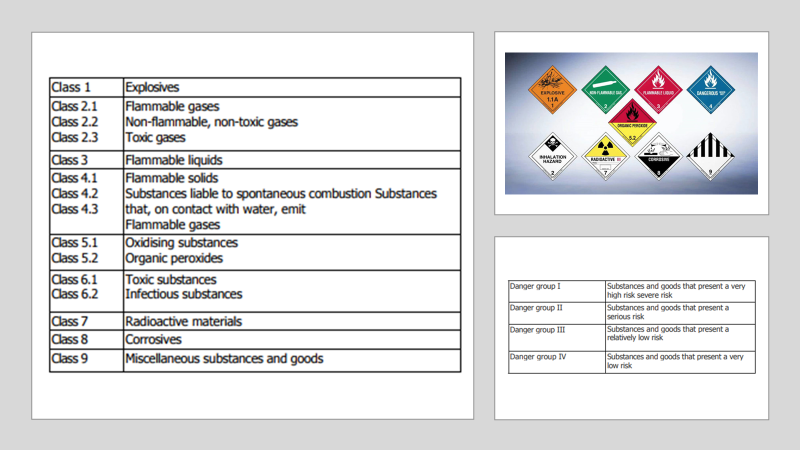
Transportation and packaging of hazardous chemicals In the past only large volume containers being transported by road (in excess of 5001) containing hazardous chemicals were subject to the act governing hazardous chemical transport. The law has changed to include all hazardous chemicals, and all tankers carrying hazardous chemicals. The act is now relevant to all classified goods transported in volumes larger that the exempt quantities, all persons and vehicles transporting such chemicals, the operator, the consignor and the consignee. These regulations apply when loading and transporting these chemicals.
All individuals involved in the process of transporting dangerous goods must comply with the regulations of the act. The act states that the consignor must ensure that the goods transported in a mixed load (multi-load) must be compatible. All hazardous chemicals have a United Nations number, which must be displayed on the outside of each container.
All loads of hazardous goods must be accompanied by a Transport Emergency Card (TREMCARD), a dangerous goods declaration; the driver should be in possession of a valid Professional driving permit as well as a clear route plan. Dangerous goods have been classified into nine classes. These classes are given in the table below.

Click here to view a video that explains the classes and divisions of dangerous goods.
Each container of classified goods that is to be transported must be labelled with the correct trade names and active ingredients and also the following information:
- United Nations Number - a four-digit substance identification number.
- Technical name and description - technical name or generic allocation for the substance.
- Class: - the goods or substance’s class code for compound.
- Danger group / Packing group: - the allocation of the goods or substance to a danger or packing group.
- Subsidiary risk: - indication of the goods or substance having more than one hazard. x Packaging method.
- Special provisions.
Click here to download a handout that explains the guidelines for transporting hazardous chemicals.